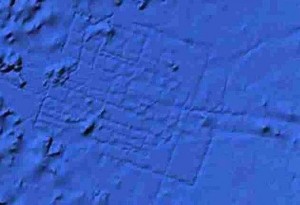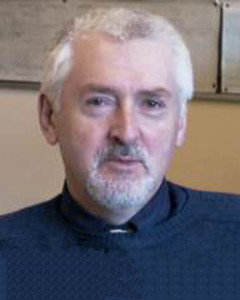comets
Clube & Napier
Victor Clube (1934- ) & Bill Napier (1940- ) are two British Astronomers, who published The Cosmic Serpent [291]. in 1982, which was later revised as The Cosmic Winter [290], which was also the title of a lecture given by Clube(b).
They have promoted what became known as ‘Coherent Catastrophism’, which envisions encounters between our Earth and large comets, events that are recorded in ancient history and mythology. They claim, for example, that the biblical Exodus story contains an early reference to Halley’s Comet! Among other encounters, they date the story of Phaëton, mentioned by Plato, to 1369 BC and also discuss catastrophic close encounters with Encke’s Comet or a proto-Encke.
Although Clube & Napier do not refer to Atlantis, from time to time, some commentators have claimed some connection between the demise of Atlantis and encounters with comets named and unnamed.
Philip R. “Pib” Burns has an extensive overview(a) of Clube and Napier’s work on his excellent website. He argues that Clube & Napier should have given greater recognition to the theories of Immanuel Velikovsky(c).
>However, The Velikovsky Encyclopedia is happy to quote a number of passages from Clube & Napier’s The Cosmic Serpent including “No authors can justifiably make reference to proposals of this kind without mention also of the investigations by Velikovsky. In aquite remarkable piece of historical analysis some thirty years ago, this author not only drew attention to the parallels between the events described in Exodus and the Ipuwer Chronicle, but also to their implications so far as a catastrophic extra-terrestrial missile and ancient chronology were concerned.” (d)<
(a) https://www.pibburns.com/catastro/clubenap.htm
(b) https://www.sott.net/article/148708-Cosmic-Winter-A-Lecture-by-Victor-Clube
(c) https://www.saturniancosmology.org/files/velikovsky/vel-pib.txt
Younger Dryas Impact Hypothesis
The Younger Dryas Impact Hypothesis (YDIH) is based on the claim that around 12,800 years ago the Earth had an encounter with a very large asteroid or comet that broke up in an airburst over North America and of which some fragments possibly hit the ground directly(a).
Many effects have been linked with this event with varying levels of enthusiasm including a suggested association with the demise of Atlantis. Elsewhere, megafaunal extinctions, cataclysmic floods, the disappearance of the Clovis people and the creation of the Carolina Bays(g), have all been proposed as consequences of this episode.
In 2006, Richard Firestone, Allen West & Simon Warwick-Smith published the foundations of the YDIH in The Cycle of Cosmic Catastrophes [110]. A year later the hypothesis had a more public airing at the American Geophysical Union Press Conference, Acapulco, Mexico, on May 23(d). This was followed the same year by the publication of a formal paper in the Proceedings of the National Academy of Sciences of the United States of America(f).
Since then volumes have been written on the subject, both pro and con(c).
A 2014 paper(h) entitled Nanodiamond-Rich Layer Across Three Continents Consistent with Major Cosmic Impact at 12,800 Cal BP by Charles R. Kinzie et al., has developed further the idea of this event being associated with the Younger Dryas. In a similar vein is an article(f) from Megan Gannon.
December 2014 saw Graham Hancock raising the issue of a cometary cause for the Younger Dryas and its possible association with ancient Egypt(e).
Martin Sweatman brought further evidence to bear on this debate in an article(i) on the Graham Hancock website. This focuses on the investigations at Hall’s Cave in Texas described in a paper by Sun et al, where the team concluded that the trace elements found there could indicate a volcanic rather than an impact as the cause of the Younger Dryas cooling! Sweatman disagrees with their conclusions claiming that there seems to be an element of selectivity in choosing data, leading to a wrong conclusion.
2019 also gave us a paper that included an extensive bibliography and overview of the YDIH debate(k).
In 2020, the eminent geologist James Lawrence Powell published Deadly Voyager [1911], which offered further support to the YDIH. This book was instrumental in changing the negative stance of a number of ardent sceptics including Michael Shermer(j).
In 2022 Powell concluded a paper reviewing the YDIH debates with the following
“Finally, we can now assess Sweatman’s suggestion that the YDIH may be ready for promotion from hypothesis to the status of theory. If we combine the definitions of “theory” from the National Academy of Sciences and the American Association for the Advancement of Science, it would read something like this:
‘A scientific theory is a well-substantiated explanation of some aspect of the natural world, based on a body of facts that have been repeatedly confirmed through observation and experiment. It refers to a comprehensive explanation of some aspect of nature that is supported by a vast body of evidence. One of the most useful properties of scientific theories is that they can be used to make predictions about natural events or phenomena that have not yet been observed.’
Those who have read this article and Sweatman’s have the information to decide whether the YDIH meets this definition. In this author’s opinion, there is a strong case that it does. Moreover, it should not be forgotten that no other single theory can explain the YD and its associated effects.”(l)
I note that Robert Schoch claims that there is no evidence to support the Younger Dryas impact theory, instead, he believes that “it was most likely due to reduced solar activity at that time, a solar shut-down.”(n) Schoch’s wide-ranging critique has been refuted by the Comet Research Group.(o)
In 2012, Jennifer Marlon et al published a paper, now made available by Marlon on the Academia website, in which they present “arguments and evidence against the hypothesis that a large impact or airburst caused a significant abrupt climate change, extinction event, and termination of the Clovis culture at 12.9 ka. It should be noted that there is not one single Younger Dryas (YD) impact hypothesis but several that conflict with one another regarding many significant details.”(m)
Scienceopen.com is a website offering “A peer-reviewed open-access journal collection covering all aspects of airbursts and impacts on Earth by comets and asteroids”. October 2023 brought the publication of five papers on the subject(p).
>In March 2024 The New York Times Magazine published an updated overview of the history and current status of the YDIH(q). The sceptical tone of the article includes an interesting look at the psychological drivers behind the popularity of the hypothesis with the general public. It concludes by noting that
In a sense, what West and his collaborators think now hardly matters. The hypothesis has already penetrated deeply, and perhaps indelibly, into the public imagination, seemingly on its way to becoming less a matter of truth than a matter of personal and group identity. Nobody I spoke with seemed to think it would go away soon, if ever. West, though, took a measured view. “All we can say is this is a hypothesis,” he said. “It’s still a debate. We may be wrong; we may be right. But only time will tell.”<
(a) https://humanoriginproject.com/evidence-younger-dryas-impact-hypothesis/
(b) YDIH: Younger Dryas Impact Hypothesis | Thongchai Thailand (archive.org)
(c) https://cometresearchgroup.org/publications/
(d) https://www.youtube.com/watch?v=f1GCgOI3B1o
(e) https://www.grahamhancock.com/forum/HancockG13.php
(f) https://www.ncbi.nlm.nih.gov/pmc/articles/PMC1994902/
(g) https://cosmictusk.com/carolina-bays-in-the-midwest
(j) In praise of intellectual honesty – The Cosmic Tusk
(k) YDIH: Younger Dryas Impact Hypothesis | Thongchai Thailand (tambonthongchai.com)
(l) https://journals.sagepub.com/doi/full/10.1177/00368504211064272
(m) (99+) Arguments and Evidence Against a Younger Dryas Impact Event | Jennifer Marlon – Academia.edu
(n) https://www.robertschoch.com/plasma_iceage.html
(o) https://cosmictusk.com/comet-research-group-responds-to-robert-schoch/
(p) https://blog.scienceopen.com/2023/10/introducing-comet-research-group-on-scienceopen/
(q) The Comet Strike Theory That Just Won’t Die – The New York Times (nytimes.com)*
Jaye, Michael *
Michael Jaye is an Associate professor at the Naval Postgraduate School, in Monterey, California. He is a  confirmed catastrophist focused on cometary impacts. In a lecture to the Geological Society of America in 2011(a) he describes two major events in the Earth’s history that had profound effects on the earth and life on it. The first was a double impact 65 million years ago and is generally accepted to have led to the demise of the dinosaurs and the second 460,000 years ago.
confirmed catastrophist focused on cometary impacts. In a lecture to the Geological Society of America in 2011(a) he describes two major events in the Earth’s history that had profound effects on the earth and life on it. The first was a double impact 65 million years ago and is generally accepted to have led to the demise of the dinosaurs and the second 460,000 years ago.
In an April 2015 lecture entitled Resolving the Problem of Atlantis, he expands on his original ideas(b) introducing a third event 13,000 years ago when another cometary impact brought an enormous amount of water to earth, which linked together previously disconnected seas and oceans.
At this point, he introduces Atlantis or more correctly the alleged Google image of Atlantis in the Atlantic Ocean that Jaye now claims was the Plain of Atlantis. As I have previously stated, the image in question shows lines that would have been kilometres in width and could not have been streets and so are also too wide to have been the irrigation ditches described by Plato. The U.S. National Oceanic and Atmospheric Administration has also debunked the silly Atlantis claims generated by these images(e). However, the problem remains, that some people believe what they want to believe not what can be demonstrated.
shows lines that would have been kilometres in width and could not have been streets and so are also too wide to have been the irrigation ditches described by Plato. The U.S. National Oceanic and Atmospheric Administration has also debunked the silly Atlantis claims generated by these images(e). However, the problem remains, that some people believe what they want to believe not what can be demonstrated.
Jaye does not accept the explanation for these anomalous lines given by Google, joining conspiracy theorists in the process. I personally think that he should stick to geology and leave the subject of Atlantis to others.
Jaye has also given me a link(c) to a video of one of his lectures. In it, one of his claims is that most of the Earth’s water is the result of a collision with an icy comet around 12,800 years ago. However, the widespread distribution of fossil fish far exceeds the areas occupied by original unconnected bodies of water suggested by Jaye. This is just one of many inaccuracies offered by him. His ideas can be read on Graham Hancock’s website(d) and in his slender 2017 66-page book, The Worldwide Flood [1549].
Jaye has failed to explain how his claim of a relatively recent acquisition by the Earth of most of its water, can account for the recurring Ice Ages that our planet has endured over many millions of years. Ice Age theory is well established, but according to him, the Earth would not have had enough water over that timespan to produce the glaciers that enveloped large areas of the globe, sometimes to a depth of 3 or 4 km, leading to the measurable isostatic rebound we still experience today. Where I’m sitting right now had a glacier of around a kilometre thick over it during the last Ice Age!
Jaye also published a paper entitled Mu and the Worldwide Flood, in which he found some support for the late Flood theory.(g)
Carl Feagans, an ardent sceptic, has published a lengthy refutation of Jaye’s theories, in particular his idea of a global flood.(f)
(b) The Explorers Club – Events – NYC – Public Lecture Series feat. Michael Jaye (archive.org)
(c) https://vimeo.com/126026401
(d) https://grahamhancock.com/jayem2/
(e) https://oceanservice.noaa.gov/facts/atlantis.html
(f) https://ahotcupofjoe.net/2019/11/the-pseudoarchaeology-of-michael-jayes-worldwide-flood/
(g) Mu and the Worldwide Flood | My-Mu.com Guest Blog (archive.org) *
Palmer, Trevor
Trevor Palmer (1944- ) is an English Professor of Biology now living in Scotland. Apart from his day job of enzymology and the study of genetic  disorders, which led to an interest in evolution, which in turn brought him to research catastrophism, he has written several books on these subjects, including >Controversy Catastrophism and Evolution [1971]<Perilous Planet Earth [888], which places today’s “concern about the threat to Earth from asteroids and comets within a historical context.” He devotes two chapters of this comprehensive work to the subject of Atlantis, in which he reviews (chap.13) some of the late 19th and early 20th century theories as well as more recent developments (chap.28) exposing many of the weaknesses in the arguments on offer.
disorders, which led to an interest in evolution, which in turn brought him to research catastrophism, he has written several books on these subjects, including >Controversy Catastrophism and Evolution [1971]<Perilous Planet Earth [888], which places today’s “concern about the threat to Earth from asteroids and comets within a historical context.” He devotes two chapters of this comprehensive work to the subject of Atlantis, in which he reviews (chap.13) some of the late 19th and early 20th century theories as well as more recent developments (chap.28) exposing many of the weaknesses in the arguments on offer.
>A lecture with the same title as the book was delivered to the Society for Interdisciplinary Studies (SIS) in September 2004 and is now available online(m).<
While Palmer does not express any personal views on the subject, it is noteworthy that he wrote an introduction to the 2005 Barnes & Noble edition of Lewis Spence’s The History of Atlantis. After a brief look at Spence’s life, Palmer gives an overview of the principal strands of Atlantology today and concluded that many of the issues debated 80 years ago are still unresolved and for that reason, Spence’s book continues to be worth studying.
Palmer wrote a short paper(a) in 1987 in which he was cautiously sceptical of the Atlantis story, particularly the possibility that it was destroyed during the Late Pleistocene era, with which I concur. He also touched on the subject of the Carolina Bays, apparently adding support to the now-discredited idea that they were created by wind action. I expect that he may have modified his views by now. However, the US Geological Survey is now (2021) identifying the bays as ‘relict thermokarst lakes’.(h)
Palmer presented a paper entitled Catastrophes: The Diluvial Evidence at the Society for Interdisciplinary Studies (SIS) Silver Jubilee Conference in September 1999.(i) He also addressed the SIS in 2004 on the background to his book published the previous year(d).
Palmer published two similar papers in 2010(b) and 2012(e) on the history of catastrophism and the ensuing debates from the time of Velikovsky until the present, when catastrophism has greater acceptance and which now offers a variety of competing ideas regarding the number, source, date and consequences of specific catastrophes.
In the second paper delivered to the Quantavolution Conference on Naxos, he offers the interesting observation that “In science, unlike religion, the great revelations lie in the future; the coming generations are the authorities, and the pupil is greater than the master if he has the gift to see things anew.”
Palmer has also written a 2018 review(c) of Perilous Planet Earth in light of developments since it was first published.
In 2009, Palmer published an interesting paper on the Black Sea and its dramatic connection with the Mediterranean (9,400 years ago) and how it may have influenced the creation of flood myths in the region(l). “The various groups currently investigating the area are agreed that cataclysmic flooding took place during the Late Pleistocene, but remain divided about whether similar floods also occurred during the Holocene. Eye-witness accounts of catastrophic floods in the Black Sea basin at either time could have been passed on to future generations, eventually giving rise to the later Mesopotamian legend of Uta-napishtim and, subsequently, the Biblical story of Noah. However, in the absence of any direct evidence of cultural transmission, that can presently only be regarded as plausible speculation.”
Palmer and Gunnar Heinsohn have been debating Heinsohn’s claim that our chronology of the 1st millennium AD is deeply flawed, on the Q-Mag website(f). Palmer has also written a lengthy paper supporting his views on the matter(g).
In addition, Palmer has also examined the ancient Greek and Roman historians “to test whether they present a picture of the past consistent with that revealed by archaeology, particularly inscriptions indicating sequences and timescales, and also to see the extent to which they support, or otherwise, the orthodox chronology and a number of representative alternative chronologies.” He concluded that there was ‘general accuracy’(j). He subsequently expanded on this paper to include a review of the chronology of the 1st millennium AD(k).
(a) See Archive 3026
(c) Archive 4971 | (atlantipedia.ie)
(d)Archive 4972 | (atlantipedia.ie)
(e) Archive 4973 | (atlantipedia.ie)
(f) https://www.q-mag.org/_search.html?req=Trevor+Palmer
(g) https://www.academia.edu/37544096/Writers_and_Re_Writers_of_First_Millennium_History_Second_draft_October_2018_
(h) https://earthobservatory.nasa.gov/images/147904/ice-age-carolinas
Tollmann, Alexander
Alexander Tollmann (1928–2007) was born in Vienna. He had been a  professor at the Institute of Geology at Vienna University from 1969. Tollmann was also a founder of the Austrian Green Party.
professor at the Institute of Geology at Vienna University from 1969. Tollmann was also a founder of the Austrian Green Party.
In 1992 together with his geologist wife Edith, also now deceased, he published a work[1184] describing two cometary collisions in the 11th and 8th millennia BC. This is available online in German with the Introduction in English(d). Frank Dörnenburg has written a highly critical review (in German) of this book, concluding with the comments – Alles in allem habe ich mit ein wenig Internetsuche und Schulstoff die Basisbeweise des Buches aushebeln können, und diese nicht auf Fehler sondern unzweideutige Manipulationen der Autoren zurückführen können. “All in all I have with a little Internet search and schoolwork can nullify the basic proofs of the book, and this can not be reduced to unambiguous error but manipulation of the authors. Ich kann Autoren die bei so etwas derart dreist zu Werke gehen nicht trauen, und jeden Beleg nachzuprüfen ob sie wenigstens da die Wahrheit gesagt haben, dafür ist mir meine Zeit zu schade. I can authors with something so brazenly works will not be trusted, and verify each document if they have at least as telling the truth, but my time is too precious.” (Google translator) >Dörnenburg was not a lone critic, as many other academics offered negative and sometimes nasty reviews(k).<
With a mass of technical data, they also claim that there was an earlier impact around 11,000 BC when a comet struck the northern hemisphere in fragments.
Wikipedia offers an interesting critical review(b) of the Tollmanns’ theory, while the Golden Age Project established by Christian O’Brien presents a more sympathetic assessment(c).
These Late-Glacial impacts are suggested as the cause of the ‘Debacle’ flood in Ontario and the ‘Spokane Flood’ in the Columbia Basin. The Tollmans then claim that a second cometary impact occurred in 7552 BC that broke into seven pieces, one of which fell in the Atlantic. They maintain that the consequences of this event were the Flood of Noah and the Holocene Extinctions.
>Heinrich P. Koch has proposed a similar impact scenario as the Tollmann’s with an extraterrestrial body fragmenting before impacting the Earth, generating catastrophes on a global scale(j).<
The Tollmanns backed up their claim with the results from field studies around the Köfels crater in the Austrian Tyrol. In 2008 two British researchers, Alan Bond & Mark Hempsell, controversially proposed[0426] that the Köfels impact was caused by an asteroid that was recorded on an Assyrian cuneiform tablet, which itself is a copy of an earlier Sumerian document dated to 3123 BC. It is also suggested that the same event was responsible for the destruction of Sodom and Gomorrah.
Towards the end of his life Tollman appears to have become somewhat irrational, for example, based on the prophecies of Nostradamus as well as a local ‘prophet’, Alois Irlmaier, together with the solar eclipse of August 11, 1999, and other signs, he predicted a global catastrophe for August 1999 and retreated to a bunkered existence, fearing the impending destruction(f).
Over ten years later other scientists claimed that a field of craters around Lake Chiemsee, in southeast Bavaria, was caused by fragments from a huge comet or asteroid that broke up in the atmosphere(a). The Wikipedia entry for the ‘Chiemgau impact hypothesis’ dismisses the hypothesis as an “obsolete scientific theory”. However, others beg to differ(g)(h).
>It should be noted that Lake Chiemsee is just north of the Austrian border and only about 50 km from the Köfels crater. Artefacts, including coins, seem to have been strongly heated on one side. This fact, together with Roman reports of stones falling from the skies and dendrochronology has suggested a date of around 200 BC for the event.>At the 2010 Quantavolution Conference in Paris, a conflicting date of 465 BC was proposed(i).<
(a) http://www.chiemgau-impact.com/
(b) https://en.wikipedia.org/w/index.php?title=Tollmann%27s_hypothetical_bolide&printable=yes
(c) https://www.goldenageproject.org.uk/19giantcomet.php
(d) https://web.archive.org/web/20160322021248/https://www2.uibk.ac.at/downloads/oegg/Band_84_1_63.pdf
(e) http://fdoernenburg.de/alien/alternativ/fun/fun03.php (German)
(f) See Archive 2968) mixed German & English
(h) Chiemgau Impact: Comet Smashed Into Southern Germany In 200 BC (archive.org) *
(i) The Chiemgau Comet (2010-q-conference.com) *
(j) Heinrich P. Koch – Atlantisforschung.de (atlantisforschung-de.translate.goog) *
See Also: Asteroids and Comets, Emilio Spedicato and Gernot Spielvogel.
Baillie, Mike
Mike Baillie is an Emeritus Professor of Palaeoecology in the School of Archaeology and Palaeoecology, Queen’s University, Belfast. He is a dendrochronologist[113] of world renown, who outlined in his recent book [111] the evidence for catastrophic encounters with asteroids or comets over the past five millennia that opened a whole new chapter in the search for the truth about our past. Baillie ascribes these events to 2354-2345 BC, 1628-1623 BC, 1159-1141 BC, 208-204 BC and 536-545 AD. He touches on a number of  legendary and historical events such as the Deluge, the Exodus and King Arthur, but seems to studiously avoid any direct reference to Atlantis. Nevertheless, his theory in conjunction with the suggestions of writers such as Emilio Spedicato enhances the possibility of the destruction of Atlantis being a consequence of a more widespread catastrophe.
legendary and historical events such as the Deluge, the Exodus and King Arthur, but seems to studiously avoid any direct reference to Atlantis. Nevertheless, his theory in conjunction with the suggestions of writers such as Emilio Spedicato enhances the possibility of the destruction of Atlantis being a consequence of a more widespread catastrophe.
>In a 1999 article, Baillie concluded with the following comment, “There is, I feel, a strong case for the contention that we do not inhabit a benign planet. This planet is bombarded relatively often. If this story is correct, we have been bombarded at least three times – and probably five times – since the birth of civilization some 5,000 years ago. And each time, the world was changed.”<
In 2004 it was revealed that a very large comet or asteroid, estimated to be ¾ of a mile in diameter, crashed into what is now Germany. The date is calculated at 200 BC, which coincides with one of Baillie’s dated catastrophes. A crater field stretching from the town of Altoetting to Lake Chiemsee is all that remains today.
Perhaps even more relevant to our study was a PowerPoint presentation(b) from Baillie to a Quantavolution Conference in Athens in 2011, which offered compelling evidence for a catastrophic event in 2345 BC. His data reinforces the work of George Dodwell who demonstrated with his study of ancient gnomons, decades earlier, that something dramatic happened to the rotational axis of the Earth in 2345 BC, which is possibly the same 2346 BC encounter with a comet proposed by William Whiston in 1696. At the same conference Baillie also presented evidence for dating the eruption of Thera to 1628 BC.
Baillie is also co-author with Patrick McCafferty of a fascinating work[112] that reinterprets some of the heroes and gods of Celtic mythology as a coded account of our ancestors’ observation of a close encounter or impact of comets with the Earth. However, Baillie’s books should be read in conjunction with an equally compelling volume[148](a) by David Talbot and Wallace Thornhill who offer a complementary but rather than conflicting interpretation of early man’s perception of highly visible cosmic events. Talbot and Thornhill have linked ancient myths and thousands of petroglyphs with their view of an electric universe, where large-scale plasma phenomena were witnessed and recorded by preliterate man. Their book has drawn extensively on the work of Dr. Anthony Peratt, who has gathered and classified an enormous database of petroglyphs from all over the world(d) that are apparently a record of celestial demonstration(s) of plasma physics.
Nevertheless, Baillie also has his critics, particularly in relation to his attitude towards proponents of the ‘New Chronology’ such as Peter James and David Rohl(c).
(b) https://www.qconference-athens-2011.grazian-archive.com/the2345topicmbai/index.html
(c) https://www.cokenais-soas.com/CAIS/Religions/non-iranian/Judaism/Persian_Judaism/book6/pt1.htm (half way down page) (link broken)
(d) https://ieeexplore.ieee.org/document/1265340
